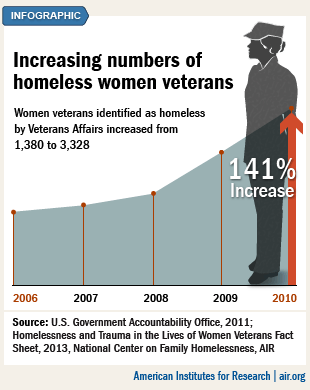Programs with New Funding in the Proposed Budget: What Does Research Say About Their Effectiveness?
President Obama’s proposed federal budget would increase funding for many education initiatives, programs for homeless veterans and disabled workers, and technology training for teachers, among other programs. What does research and evidence say about these programs' effectiveness and value?
Proposed: America's College Promise creating new federal-state partnerships to provide two years of free community college
What is the value of community college and does it help students succeed? With “America’s College Promise” proposed by President Obama, the first two years of community college would be free. If implemented, it could affect over 9 million students. Research provides some surprising answers.
As the academic year begins, students, parents, instructors, and administrators face difficult choices with long-term consequences. What should I study to make the most of my investment? How will I pay for it? For colleges, how can we manage growing costs and shifting attitudes? Recent work sheds light on some of these questions.
Proposed: $125 million to promote the re-design of America's high schools by integrating deeper learning, with a particular focus on STEM-themed high schools that expand opportunities for girls and other groups underrepresented in STEM fields
What do today’s students really need to learn in order to succeed, not only in the classroom but also later on in college, careers, and as engaged citizens? What role can deeper learning—“a set of competencies students must master in order to develop a keen understanding of academic content and apply their knowledge to problems in the classroom and on the job”—play?
STEM degree production in the U.S. is not keeping pace with the demand for STEM talent. Women, racial and ethnic minorities, and persons with disabilities are underrepresented in the STEM disciplines—the largest untapped STEM talent pools in the United States.
Proposed: $750 million for the Department of Education's Preschool Development Grants, an increase of $500 million over the 2015 level
While Congress didn’t approve President Obama’s proposed $75 billion investment in quality preschool for all four-year-olds, government-supported preschool is alive, recovering from the recession, and growing again at the state level. Principal researcher Susan Muenchow suggests policymakers ask three central questions when considering preschool expansion: What makes a preschool high quality, and does it matter? Should public funds for preschool be free to all 4-year-olds or limited to those from low-income families? Is one year of preschool enough?
Transitional Kindergarten in California: Comparing Transitional Kindergarten and Kindergarten Classrooms
The rollout of California's Kindergarten Readiness Act has given rise to questions about how transitional kindergarten is being implemented in districts throughout California. This second research brief in a series highlighting findings from the study focuses on characteristics of transitional kindergarten classrooms compared with those of kindergarten classrooms.
Proposed: Additional resources to end veterans’ homelessness in 2015 and end chronic homelessness in 2016
Research shows that traumatic experiences prior to and during military service can have a significant impact on the health and well-being of women Veterans, increasing their risk for homelessness. Traumatic experiences can also affect ability to maintain health and sustain employment. With advances in awareness of the prevalence and impact of trauma in the lives of women Veterans, trauma-informed care is now seen as a best practice to support recovery.
Trauma-informed care is a universal framework for addressing trauma that requires changes to the practices, policies, and culture of an entire organization, so all staff have the awareness, knowledge, and skills needed to support veterans. This brief provides an introduction to trauma-informed care and identifies reasons why trauma-informed care is a best practice for serving veterans experiencing homelessness.
Proposed: Race to the Top for Equity and Opportunity competition centered on increasing the academic performance of high-need students and closing the achievement gap
Educational opportunity is a cherished part of the American story of upward mobility and social justice. The Equity Project at AIR is committed to building an inclusive and vibrant future through education.
In February 2014, President Obama launched the My Brother’s Keeper initiative. In July 2014, the president announced an additional $104 million in funding from new partnerships with public and private groups to address the opportunity gaps faced by boys and young men of color at critical stages throughout their lives. AIR’s work focuses on issues critical to the support of young men of color, from childhood interventions to preparation for career success.
For low-income and minority students, education is the key to success and upward mobility. But in the past several decades, evidence shows that education has not been acting as the Great Equalizer. The Breakthroughs in Education and Social Mobility Research speaker series is dedicated to bringing to light the most promising research illuminating the educational pathways to upward mobility.
Proposed: Professional development for 100,000 teachers to help them make effective use of new broadband connectivity, as the Administration works to achieve the President’s goal of connecting 99 percent of American students to the broadband and wireless
"Future Ready” is a White House and U.S. Department of Education initiative focused on ensuring America’s students have the skills they need to succeed in a competitive global economy. AIR is working closely with the Department to help educational leaders foster a culture of digital learning in their schools. Learn how these efforts are empowering educators’ use of technology to transform teaching and learning.
Proposed: Funding for the Social Security Administration, in partnership with other federal agencies, to test innovative strategies to help workers with disabilities remain in the workforce
Workers with disabilities have more to worry about on the job than those without disabilities. They earn less than their similarly educated colleagues without disabilities, and this gap widens as they climb the educational ladder. On top of that, new research shows, states and the nation pay a steep price in tax-revenue losses.
Analysis by AIR finds that those with disabilities earn 64 cents to every dollar their colleagues make, a disparity on par with the gender pay gap. Considering that equal pay is key to keeping those with disabilities financially independent and out poverty, AIR explored the key facts and the ways that policy can help equalize income at a briefing on January 22, 2015. Speakers also discussed what recent changes to the Workforce Innovation and Opportunity Act mean for workers with disabilities.
 Earning Success Through Community College
Earning Success Through Community College

 Trauma-Informed Care for Organizations Serving Homeless Female Veterans
Trauma-Informed Care for Organizations Serving Homeless Female Veterans
 What the Pay Gap for Disabled Workers Costs Them and the Nation
What the Pay Gap for Disabled Workers Costs Them and the Nation